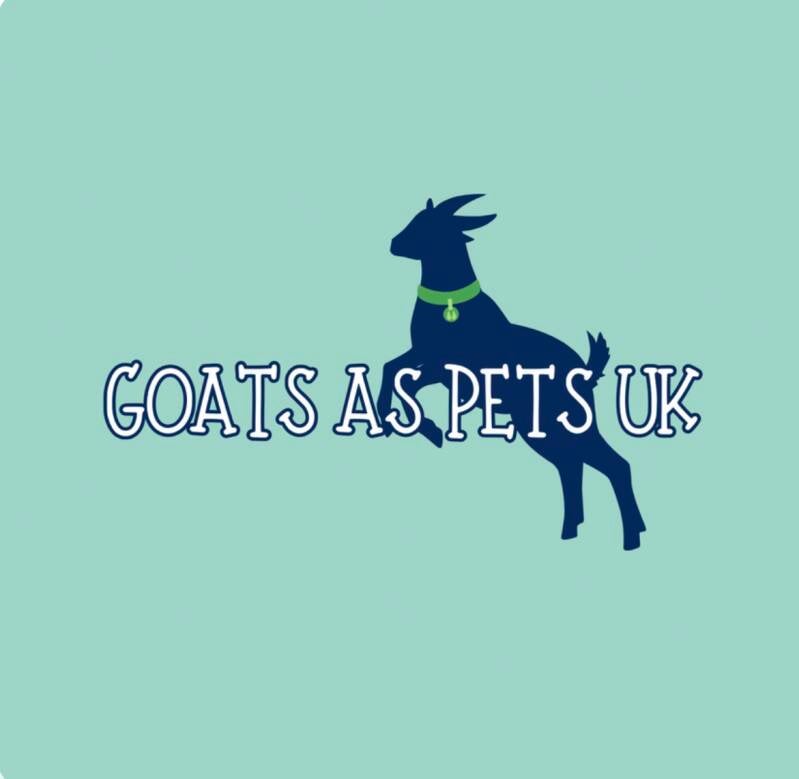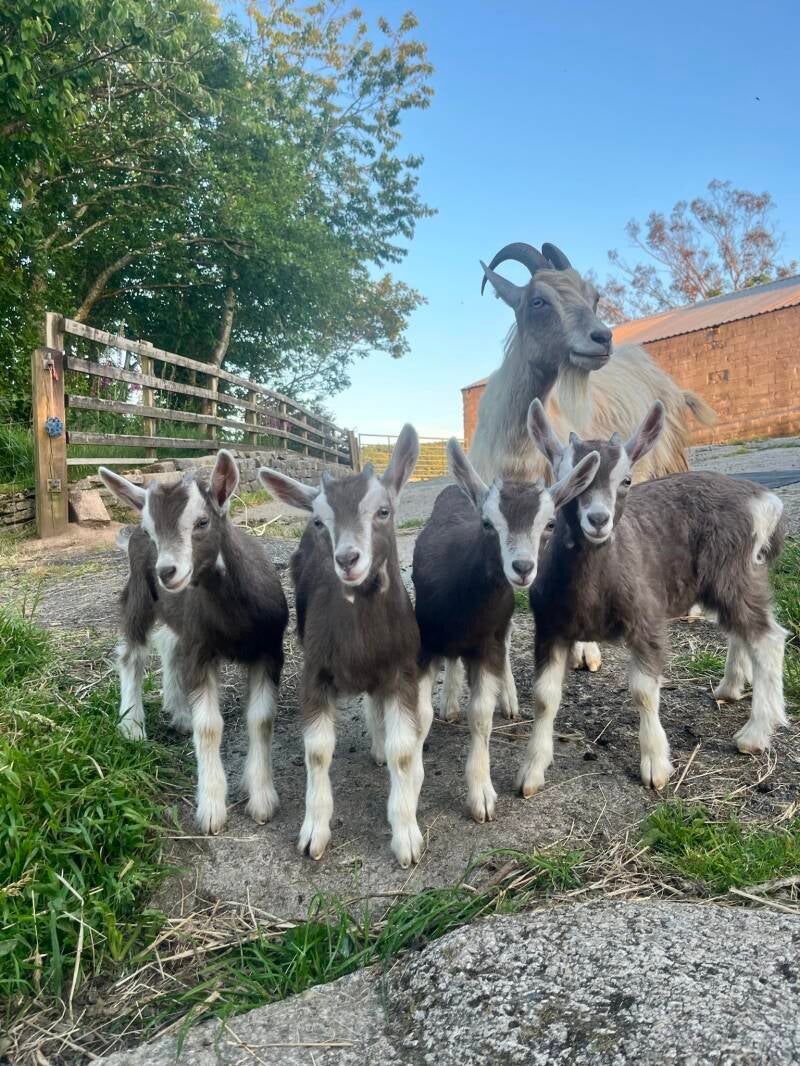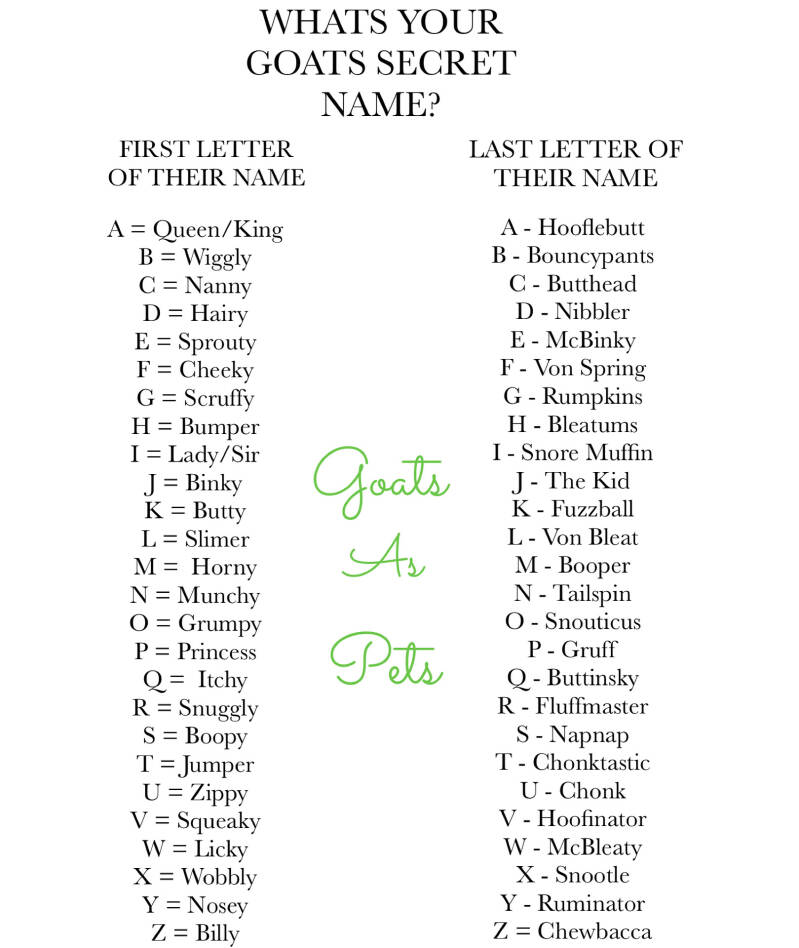
FUN & FACTS

Photo Credit: Jo Bridges
Because goats are amazing, weird, wonderful… and slightly bonkers.
Fascinating goat facts
🐐 Goats were among the first animals domesticated by humans, over 10,000 years ago!
🐐 They may have discovered coffee — a goat herder named Kaldi noticed his goats were hyper after eating red berries. The rest is jittery history!
🐐 They’re brainy little beasts. Goats can learn their names, come when called, and even understand simple words and routines — so when you shout “Dinner time!”, they really do know what you mean.
🐐🐐 Goats are herd animals, meaning they need the company of other goats — but unlike sheep, they don’t necessarily stick close together at all times 🐐🐐
🐐 Those weird rectangular pupils? They give goats panoramic vision of up to 340°, helping them spot predators quickly.
🐐 Some goats have wattles (those little flaps of skin near their necks) — no known purpose, but they’re perfectly normal!
🐐 Not all goats have horns. Some breeds are naturally polled (hornless), and very rarely, goats can be polycerate — born with more than two horns.
🐐 Every goat has a unique voice, and yes — they can have accents! They also often develop a distinct call just for their favourite human.
🐐 They read your emotions. Studies show goats respond to facial expressions, tone of voice, and even your mood. (They know when you’ve had a bad day.)
🐐 Goat keeping is great for your health! It boosts your vitamin D, keeps you active, and their cheeky antics are guaranteed to lift your spirits.
🐐 Goats are natural climbers — and not just on hills! They can scale trees, walls, and even dam walls. In Morocco, goats are known to climb argan trees to eat the fruit!
🐐 Goats are curious by nature, not mischievous on purpose. They nibble and chew everything not because they want to eat it, but because they explore the world with their lips and tongues.
🐐 They don’t have top front teeth! Goats have a hard dental pad instead, which helps them graze and strip leaves clean off branches.
🐐 Their poop is a brilliant garden fertiliser – dry, pellet-like, and low odour, goat droppings are fantastic for compost.
🐐 They’re escape artists. If you think your fence is goat-proof, think again. They can jump, squeeze, or simply problem-solve their way out.
🐐 Each goat has its own personality — some are bold, some are shy, some are bossy, and some just want cuddles (and treats).
🐐 And yes… they are COMPLETE HOOLIGANS. But that’s part of the charm.
Culture, folklore, mythology and legends
Pan:
- The Greek god of the wild, shepherds, and flocks, had goat legs, horns, and played the panpipes.
Faunus:
- The Roman god of forests and fertility, was also half-goat and loved a good party.
In Norse mythology:
- Thors chariot was pulled by two magical goats — Tanngrisnir and Tanngnjóstr. He could eat them, then bring them back to life the next day!
In Hindu mythology:
- Naigamesha is a goat-headed deity associated with children and childbirth.
- Daksha was beheaded for offending Shiva — then revived with the head of a goat.
- Agni, the fire god, rides a powerful he-goat as his mount.
- Karttikeya is sometimes shown riding a goat or a goat-drawn chariot.
In medieval Europe:
- Goats were sometimes (unfairly) associated with witches and the devil, largely because of their horns and wild nature. The image of Baphomet, a goat-headed deity, was popularised in the 19th century — but it has nothing to do with real goats!
In Chinese astrology:
- The goat (or sheep) is the 8th sign of the zodiac. People born in the Year of the Goat are said to be gentle, artistic, and kind-hearted.
In ancient Egypt:
- Goats were sacred to several deities, including Khnum, the ram-headed god of creation and water (yes, he’s a ram, but early depictions of horned animals often blended features).
In Icelandic folklore:
- The Yule Goat was originally part of pagan traditions. Later, it evolved into a festive figure (like our Father Christmas), and now Scandinavian countries decorate with straw goats at Christmas.
In India:
- goat symbolizes offerings to Agni-Soma in rituals, serves as a potential recipient of offerings, and is also associated with purification rites, notably in contexts involving severe moral violations.
In some West African cultures, goats are seen as guardians or spiritual guides, often symbolising sacrifice, wisdom, or rebirth.
Some believe unicorns originated from a type of ancient goat-antelope.
The word ‘tragedy’ comes from the Greek word tragōidia, meaning “goat song.”This likely refers to goats being sacrificed in early Greek drama festivals.

Create Your Own Website With Webador